You’ve probably heard the phrase “defensive driving” — but do you really know what it means?
Defensive driving can mean different things depending on the context; it can be a strategy for being a safer driver, or it can refer to a defensive driving course. What does driving defensively mean and why should you do it? And should you sign up for a defensive driving course? Read on for everything you need to know.
What Is Defensive Driving?
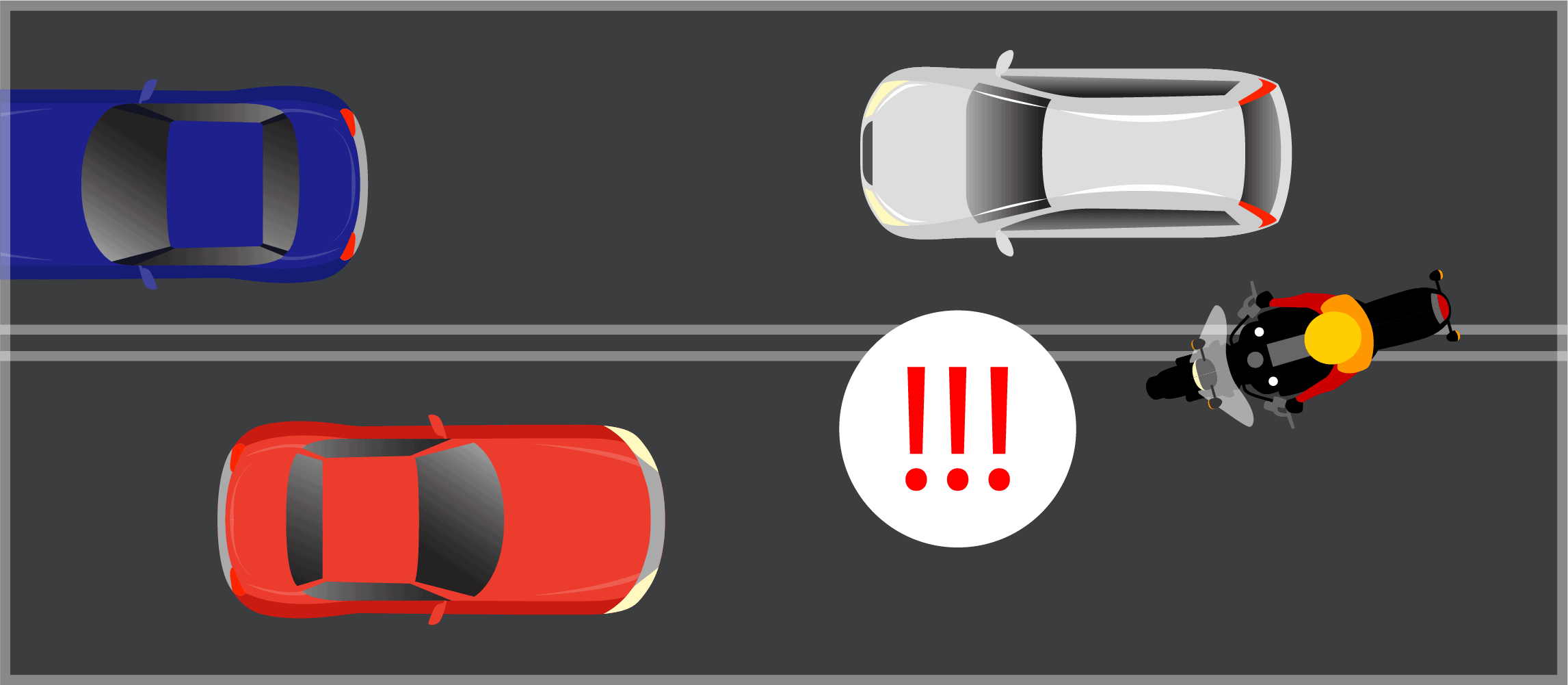
Defensive driving means utilizing a series of strategies that make you a safer driver by helping you anticipate and address hazards predictably, calmly, and safely.
Defensive driving goes beyond just the basic laws and procedures of operating a motor vehicle; it involves anticipating risk and making well-informed decisions to avoid risk whenever possible, or confront it safely when it cannot be avoided.
Traffic school can help you keep a clean driving record, prevent insurance increases, and more!
Benefits of Defensive Driving
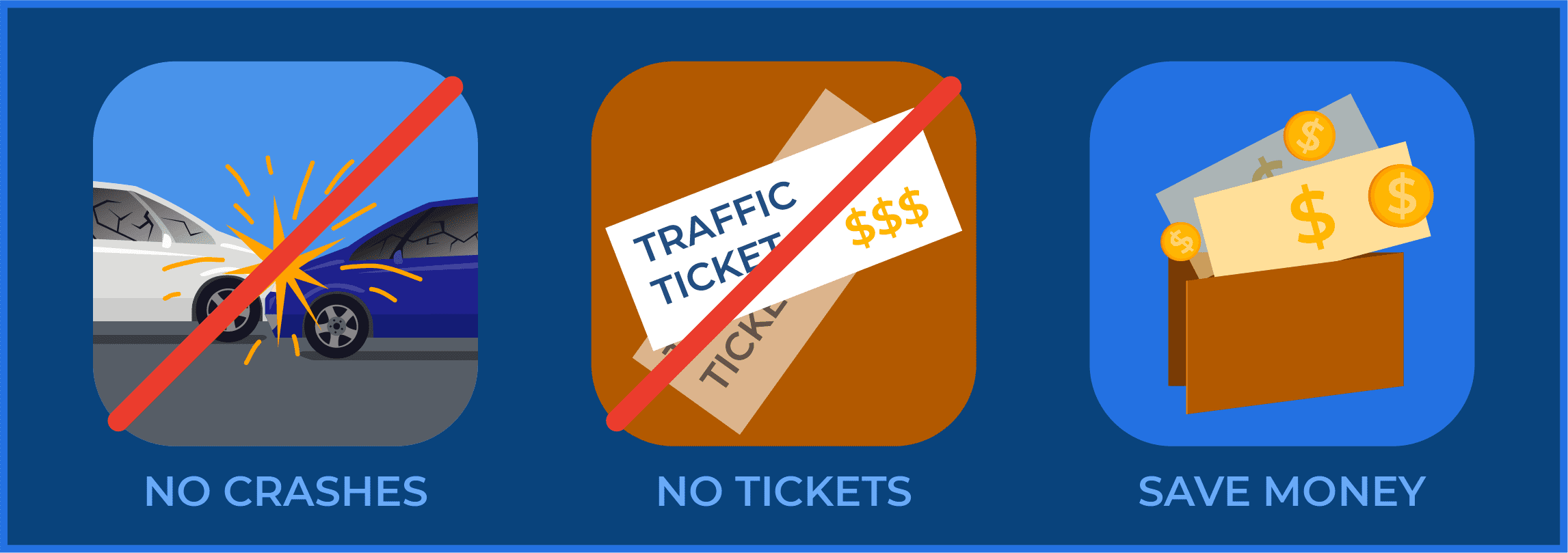
In the United States alone, nearly 43,000 people die in motor vehicle crashes each year. Traffic crash-related injuries are the leading cause of death for people between the ages of five and 29. Driving is inherently dangerous — but there are steps you can take to better protect yourself and others on the road.
That’s the biggest benefit of defensive driving: It makes you a better and safer driver. This can help protect you from traffic incidents and crashes, but it can also help protect others on the road around you.
There are other, secondary benefits of defensive driving. Those who Traffic tickets are expensive — they require you to pay fines, and then can result in increased auto insurance premiums. For example, in some cases the true cost of LA county traffic ticket could be up to 35 times the cost of the actual ticket. By driving defensively, you can help avoid the hassle of dealing with traffic tickets, and save money by not getting tickets.
5 Examples of Defensive Driving
Defensive driving encompasses habits behind the wheel, preparation before driving, critical thinking, and risk avoidance. Here are some examples of behaviors used by defensive drivers to make themselves and the people around them safer on the road.
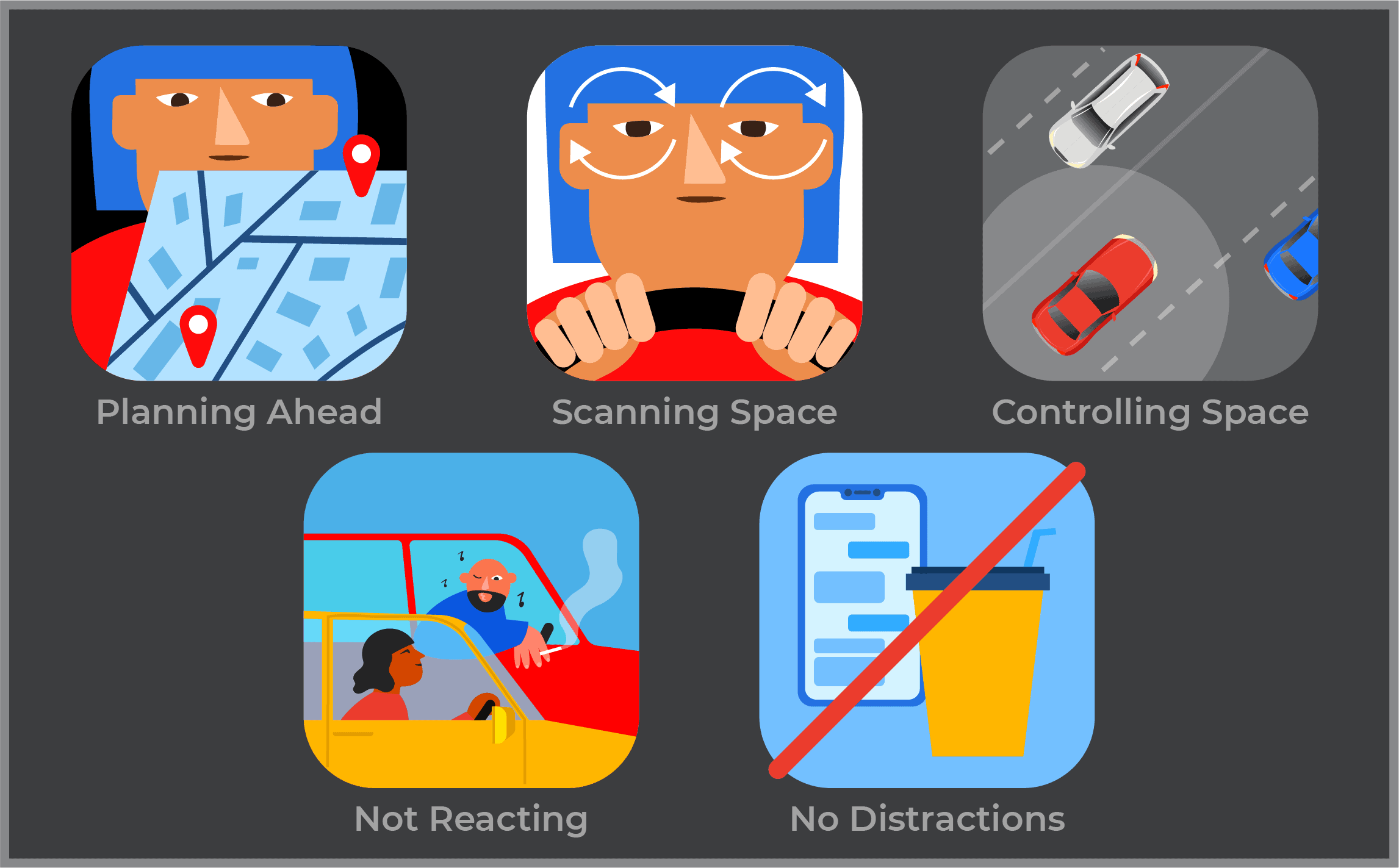
Planning Ahead
Defensive driving doesn’t only involve what you do while you’re actually driving. Defensive drivers plan ahead before they even get behind the wheel. This means getting in the habit of checking weather and road conditions before you drive, so you know if there are any hazards like standing water or snow that you need to be aware of on your route. Planning ahead also means leaving early enough to be able to take your time on your drive so you can navigate these kinds of hazards carefully and safely.
You should also plan ahead to drive at the best time of day — avoiding rush hour so you can drive when there’s less traffic, leaving at the appropriate time so you can finish your trip before dark, or giving yourself extra time for navigation when driving in an unfamiliar area.
Scanning Your Surroundings
We often hear that drivers should keep their eyes on the road. But that’s not entirely true — the most defensive drivers are constantly scanning their surroundings, moving their eyes from the road ahead, to the sides of their car, to their rearview mirror, and back. This allows them to be constantly on the lookout for any potential hazards that could arise while they drive. Remember that hazards don’t always come from in front of you while you’re driving — you need to be aware of all of your surroundings.
Leaving a Space Cushion Around Your Vehicle
Defensive drivers don’t drive too close in front of the vehicles in front of them, and they brake early to avoid getting too close. But they also stay aware of the spaces to the sides and behind their vehicles, and try to leave space in those areas, too. For example, defensive driving means changing lanes to avoid another vehicle that is tailgating you, or avoiding driving immediately next to another car in the lane next to you.
Keeping space around your vehicle allows you to have room to maneuver and to create an exit plan — a way to get your vehicle to safety should a hazard suddenly arise.
Not Letting Other Drivers’ Actions Affect You
Defensive driving is the opposite of road rage.
Many cases of road rage begin when another driver does something offensive (either by mistake or intentionally bad or even reckless or aggressive driving) and you let it affect your emotions. When you become angry, upset, or otherwise emotional, it affects your ability to make calm, rational, safe decisions behind the wheel.
That’s why defensive drivers don’t let other drivers’ actions affect them, emotionally or mentally. They don’t take things personally when on the road — they focus on what they’re able to control, which is their own actions and decisions.
Avoiding Distractions
There are three types of distractions for drivers:
- Visual, which includes anything that distracts your eyes from scanning your surroundings.
- Manual, which includes anything that distracts your hands away from the steering wheel while driving.
- Cognitive, which includes anything that distracts your mind so you fail to focus on the task at hand, which is driving safely.
Distractions can fall into one, two, or even all three categories. For example, texting is a visual distraction since it involves looking at a phone screen, a manual distraction since it involves holding a phone or typing, and a cognitive distraction since it involves reading and processing a message and formulating a response.
Defensive drivers are aware of all three types of distractions and actively seek to avoid them while driving. They understand that safe driving requires them to be present and focused, and they treat the task with the gravity it deserves.
What Is a Defensive Driving Course?
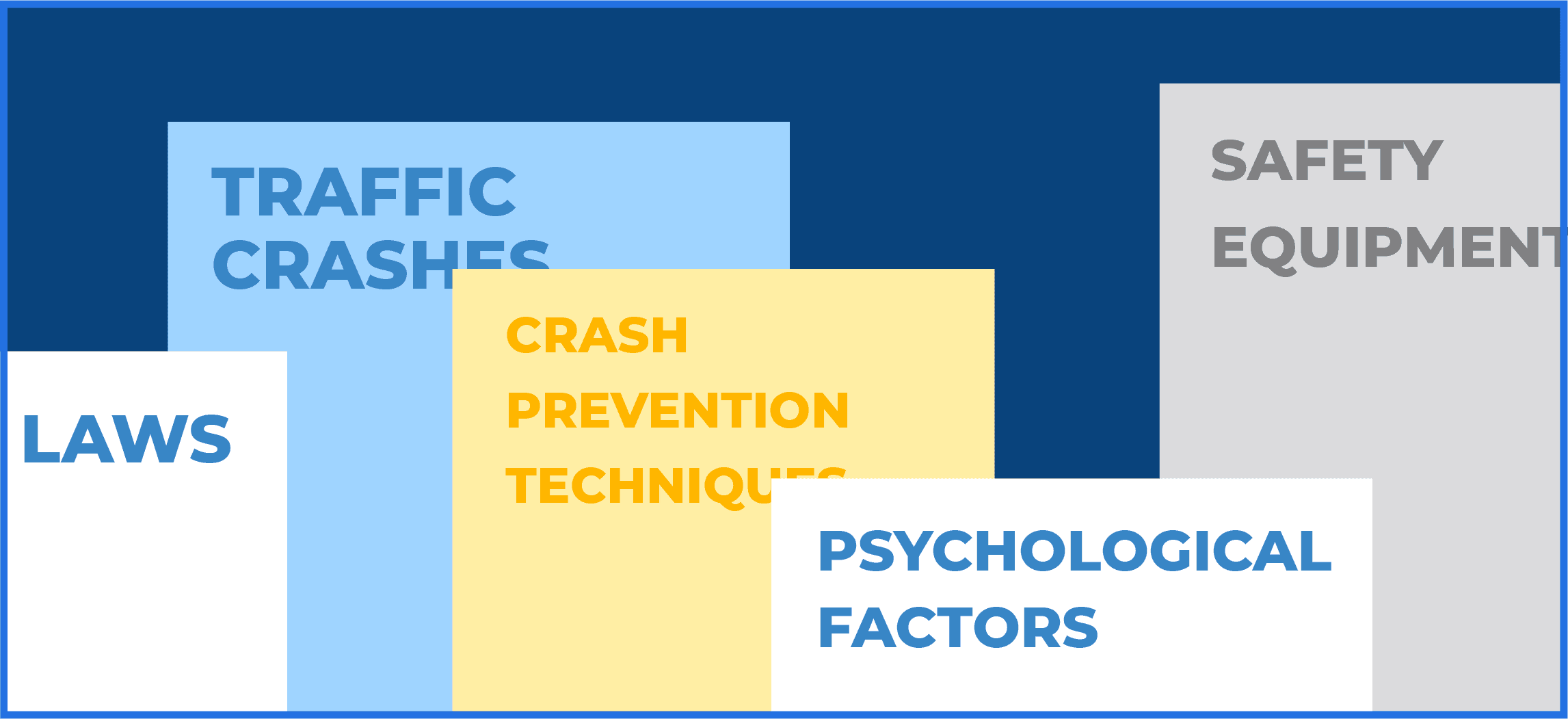
A defensive driving course is a supplemental, educational course offered to drivers in certain states. It teaches them techniques, skills, and strategies to drive more defensively. Defensive driving courses are not standard parts of driver education. They are typically optional to take.
What Do You Learn in a Defensive Driving Course?
The curriculum for a defensive driving course is set by each state’s DMV, so they differ based on where you take the course. But no matter where you enroll, you can expect these basics to be covered:
- Information about traffic crashes, including the impact in lives lost, injuries, and dollars spent.
- Psychological factors that can affect your driving abilities and skill.
- Human factors that can affect your driving ability, like mind-altering substances.
- What safety equipment is available in vehicles, and how to use all of it properly and safely.
- Crash prevention techniques that you can use while driving. These may include:
- Scanning the road and other areas around you.
- Adapting to your surroundings as needed.
- Leaving proper distance between your vehicle and other vehicles on the road.
- Understanding different types of hazards and what to do to avoid them.
- How to handle vehicle emergencies.
- State laws that are specific to the state where the defensive driving course is based.
What’s the Difference Between Traffic School and a Defensive Driving Course?
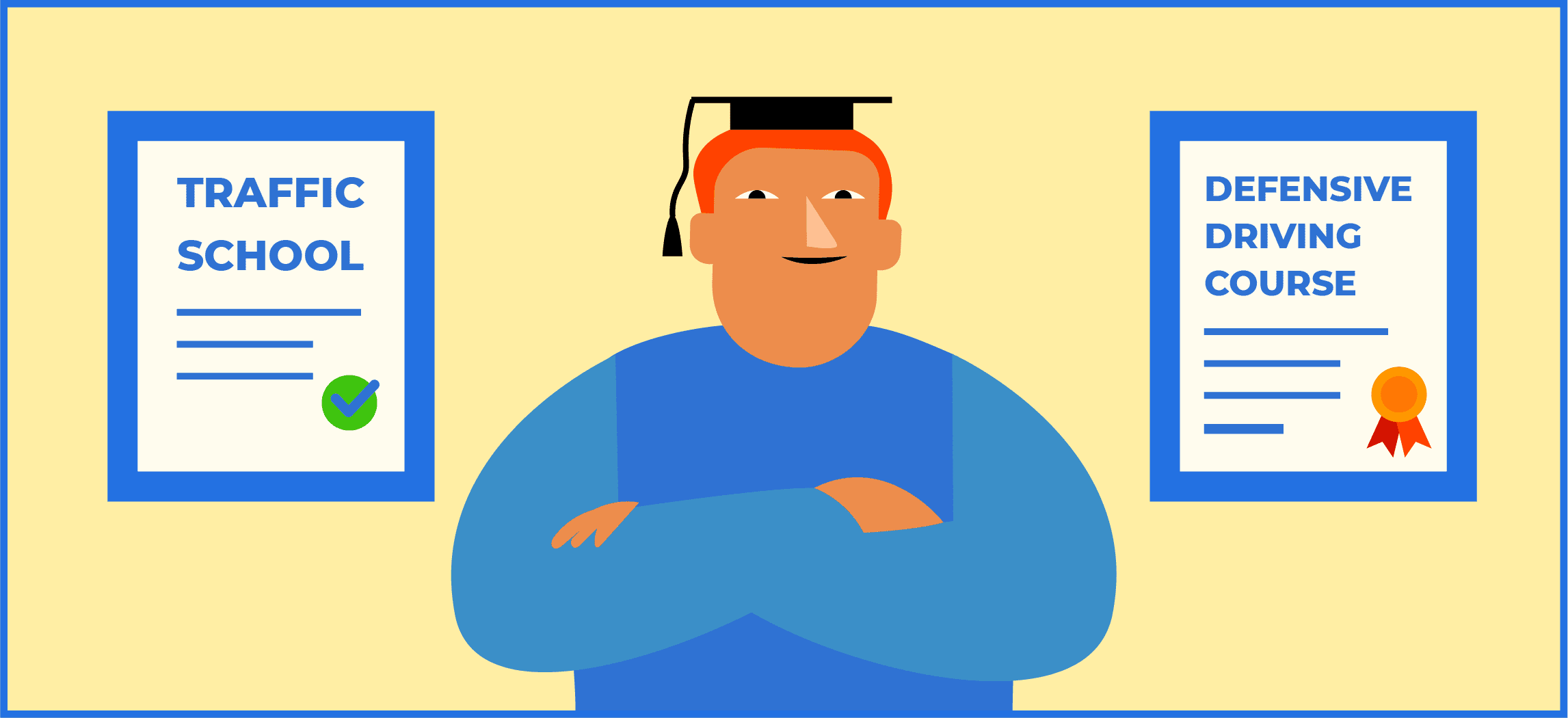
A defensive driving course is not the same as traffic school (also known as traffic violator school). Traffic school can only be taken after you’ve been charged with violating one or more traffic laws, and have received court approval to attend DMV traffic school. In California, traffic school can be used to mask up to one point on your license to keep it from affecting your auto insurance rates (the point still stays on your driving record).
Defensive driving courses, on the other hand, are optional and voluntary. The effect on your driving record and insurance rates varies depending on where you live and who supplies your auto insurance. In some states (like New York), you can attend a defensive driving course to remove a point from your license. In other states, a defensive driving course can help lower your insurance rates.
California is different from many other states. In the Golden State, there’s not really such thing as a defensive driving course. Instead, California offers a Mature Driver Improvement Program that’s approved by the DMV and can lower insurance rates only for drivers ages 55 and older. Any company that advertises this course as a defensive driving course may be misleading you.
If you are under 55 and want to learn more about defensive driving, there are online courses you can take. Just note that in California, there is no state requirement that your auto insurance rates be lowered after successfully completing a course if you are under 55. Your insurance company may still offer you a discount, but that varies by company — reach out to your insurer directly to see if they offer any discount options that you may qualify for.
Why Enroll in a Defensive Driving Course?
One of the most important reasons to consider enrolling in a defensive driving course is because it makes you a better, safer driver. This can help you avoid crashes and tickets. It can refresh your existing driving skills and help you learn new skills, as well as help you learn about any changes or updates to traffic laws that have occurred since you last completed driver education.
Depending on where you live, additional benefits can include:
- Improvements to your driving record.
- Auto insurance discounts.
Should You Take a Defensive Driving Course?
Since defensive driving courses are optional, that’s up to each driver to decide! But if there are benefits that you can get from a course and you’d like to take one, consider the most convenient option: A fast, easy, and affordable online course that you can complete on your own time, from anywhere.
